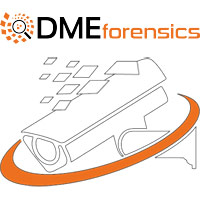
This way, the DVR can quickly find the correct blocks for playback or export. Data at the front of the drive, or sometimes the front of each partition if the drive is partitioned, will provide an index which identifies which block belongs to which camera and corresponds to which time period. These blocks are laid down roughly in chronological order, first from one channel, then another and so on. Usually the video is divided into blocks of data in a similar way to most other filesystems. How is the video data stored, and how does DVR Examiner extract it? Instead, these files are built when the video is exported. Most DVRs will not actually store “files” as we know them, certainly not the files in the same format that are exported from the DVR. While it seems that for every generalization we might try and make of DVRs and the way they store their data there is an exception, there are also some common tendencies. However, if you take a closer look at these “unallocated” spaces, you may find some familiar structures and multitudes of highly compressed video data.

Sometimes this is in conjunction with a known filesystem, often Ext 2 or 3, but even in these cases the video data is typically located in a large proprietary partition which won’t be recognized by conventional computer forensic tools. Data recovery with DVR Examiner works by reverse engineering the many different DVR filesystems to locate and extract video footage.


 0 kommentar(er)
0 kommentar(er)
